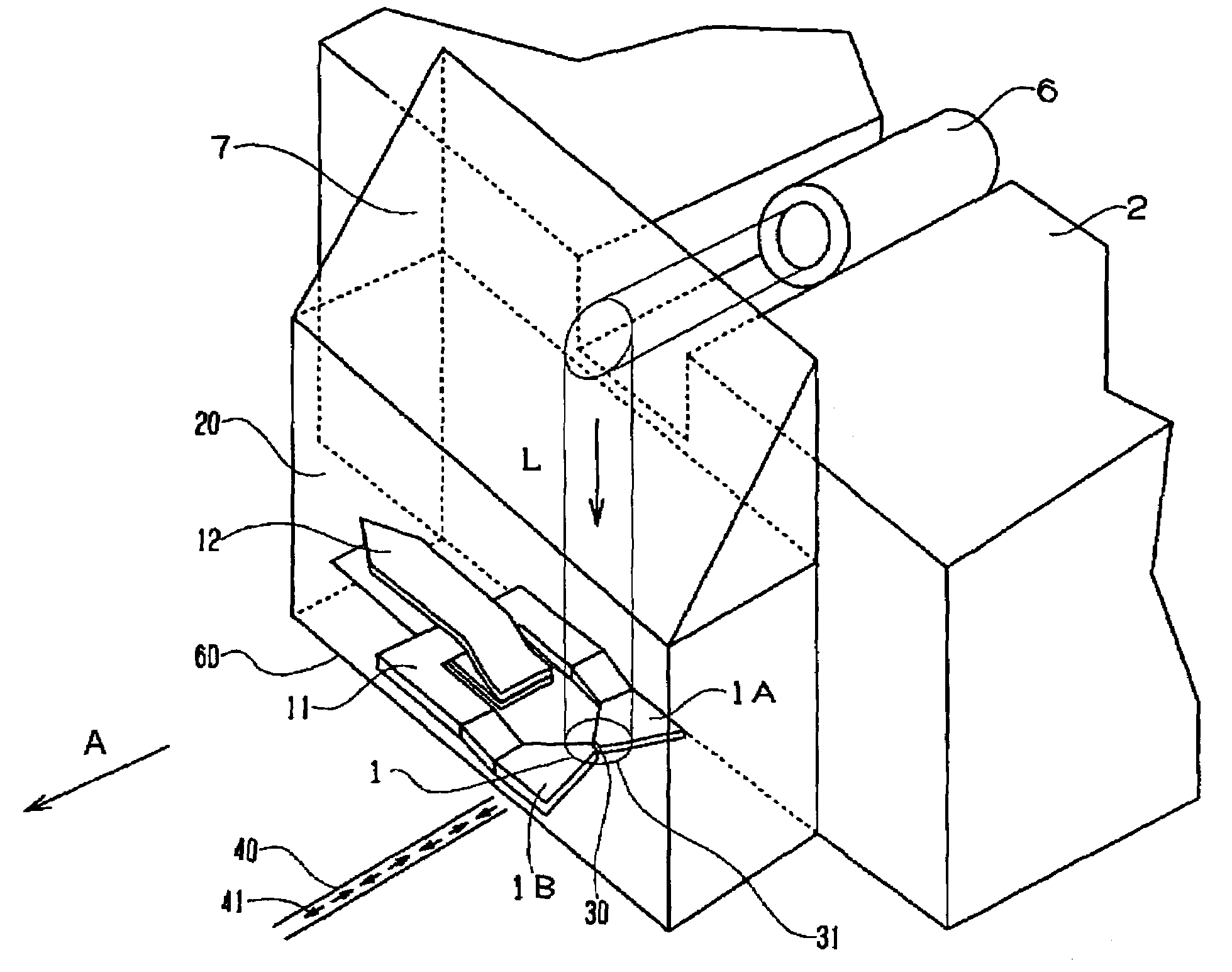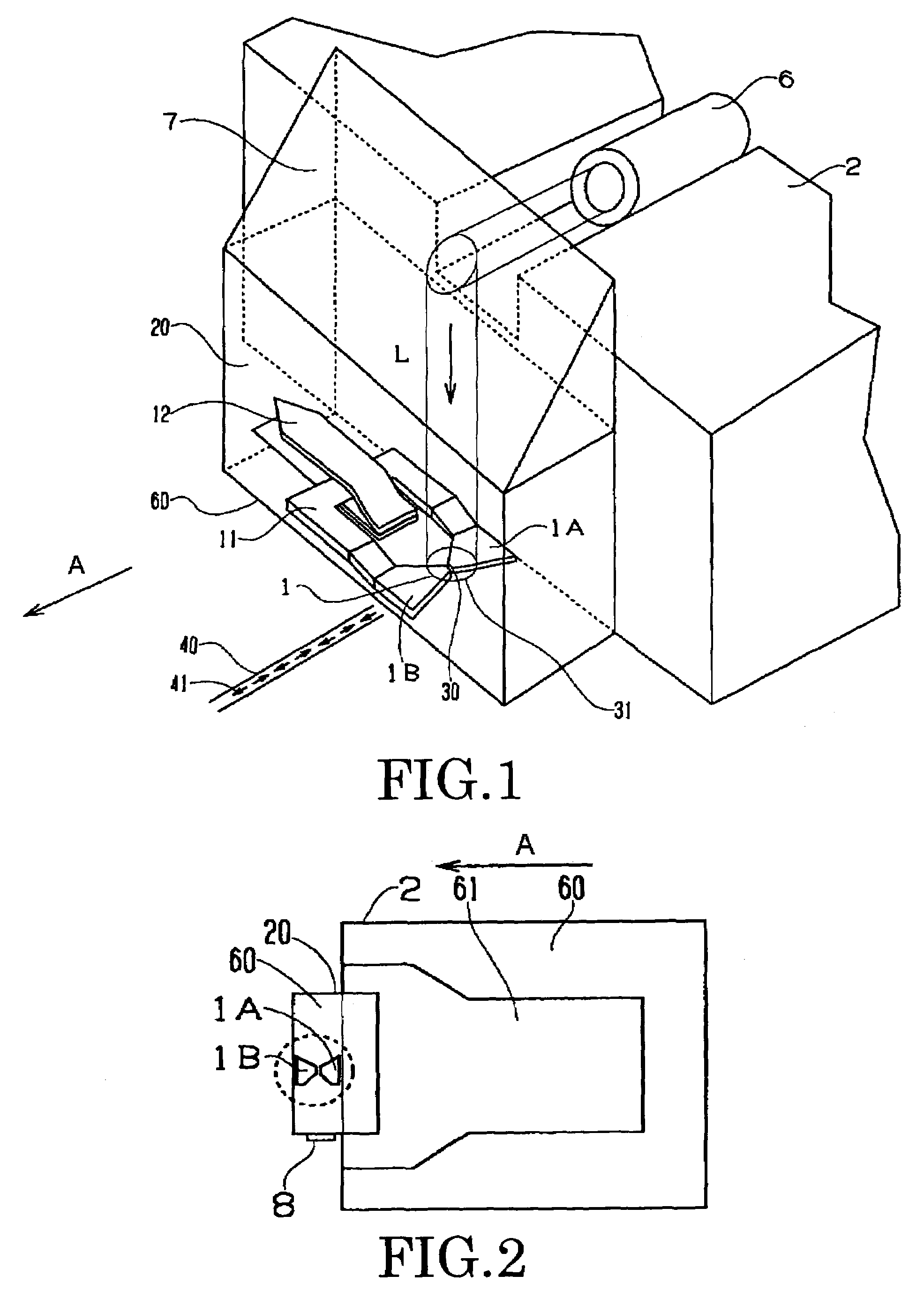Optically-assisted magnetic recording head and optically-assisted magnetic recording apparatus
a technology of magnetic recording apparatus and magnetic recording head, which is applied in the field of optically assisted magnetic recording apparatus, can solve the problems of difficult to ensure thermal agitation resistance, troublesome operation, and inability to record, etc., and achieves stable magnetic recording, high efficiency, and ultra-high density
- Summary
- Abstract
- Description
- Claims
- Application Information
AI Technical Summary
Benefits of technology
Problems solved by technology
Method used
Image
Examples
third embodiment
[0143]FIG. 18B is a plan view of the recording head as the third embodiment, taken from its medium-facing surface. Here again, common or equivalent elements or components to those already explained with reference to FIGS. 1 through 17 are labeled with common reference numerals, and their detailed explanation is omitted.
[0144]In this example, a laser element 80A is provided as the light source of the light beam on the head slider 2. The laser element 80A is a surface emission type light-emitting element such as vertical cavity surface-emitting laser (VCSEL). The light beam L emitted from the emission surface of the laser element 80A is irradiated onto the gap 30 of the recording element 1 via an optical means 90 such as a lens, if necessary.
[0145]The specific example shown here makes it possible to integrate the laser element as the light source, the recording element 1 and also the magnetic recording element, not shown, inside the head slider 2.
[0146]For example, these components ca...
fourth embodiment
[0149]FIG. 19B is a plan view of the recording head as the fourth embodiment, taken from its medium-facing surface. Here again, common or equivalent elements or components to those already explained with reference to FIGS. 1 through 18B are labeled with common reference numerals, and their detailed explanation is omitted.
[0150]The head according to this specific example is similar in construction to the third specific example. However, here is used an edge-emitting type laser element 80B. Even by using the edge-emitting type laser element 80B, highly efficient evanescent light can be easily generated.
[0151]Although explanation has been omitted from the description about the foregoing specific examples with reference to FIGS. 1 through 19B, from the viewpoint of preventing mutual abrasion and crushing of the magnetic recording medium 200 and the head slider 2, which may occur while the head slider 2 moves relative to the magnetic recording medium 200, floating above or in contact wit...
PUM
| Property | Measurement | Unit |
|---|---|---|
| anisotropy energy density | aaaaa | aaaaa |
| particle size | aaaaa | aaaaa |
| thickness | aaaaa | aaaaa |
Abstract
Description
Claims
Application Information
 Login to View More
Login to View More - R&D
- Intellectual Property
- Life Sciences
- Materials
- Tech Scout
- Unparalleled Data Quality
- Higher Quality Content
- 60% Fewer Hallucinations
Browse by: Latest US Patents, China's latest patents, Technical Efficacy Thesaurus, Application Domain, Technology Topic, Popular Technical Reports.
© 2025 PatSnap. All rights reserved.Legal|Privacy policy|Modern Slavery Act Transparency Statement|Sitemap|About US| Contact US: help@patsnap.com



